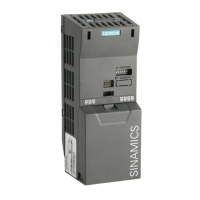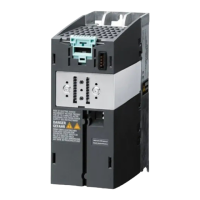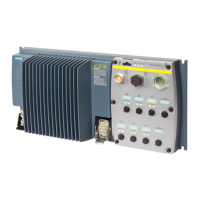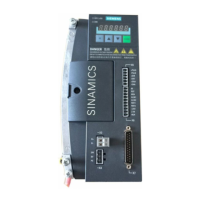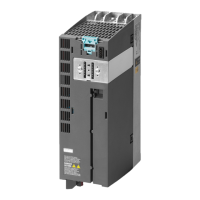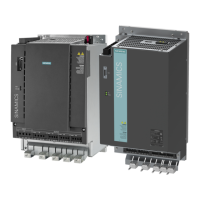Setpoint channel and closed-loop control
7.4 Vector speed/torque control with/without encoder
Inverter chassis units
Operating Instructions, 07/2016, A5E00331449A
345
Vector control with encoder
Description
Benefits of vector control with an encoder:
● The speed can be controlled right down to 0 Hz (standstill)
● Stable control response throughout the entire speed range
● Allows a defined and/or variable torque for speeds below approx. 10% of the rated motor
speed to be maintained
● Compared with speed control without an encoder, the dynamic response of drives with an
encoder is significantly better because the speed is measured directly and integrated in
the model created for the current components.
A model change takes place between the current model and the observer model within the
speed range p1752 x (100 % - p1753) and p1752. In the current-model range (i.e., at lower
speeds), torque accuracy depends on whether thermal tracking of the rotor resistance is
carried out correctly. In the observer-model range and at speeds of less than approx. 20% of
the rated speed, torque accuracy depends primarily on whether thermal tracking of the stator
resistance is carried out correctly. If the resistance of the supply cable is greater than 20 to
30 % of the total resistance, this should be entered in p0352 before motor data identification
is carried out (p1900/p1910).
To deactivate thermal adaptation, set p0620 = 0. This may be necessary if adaptation cannot
function accurately enough due to the following general conditions. This may be the case, for
example, if a sensor is not used for temperature measurement and the ambient
temperatures fluctuate significantly or the overtemperatures of the motor (p0626 to p0628)
deviate significantly from the default settings due to the design of the motor.
Actual speed value and rotor position measurement, motor encoder
Speed controller with/without encoder
Speed controller adaptation (Kp_n/Tn_n adaptation)
Speed control configuration
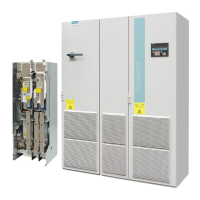
